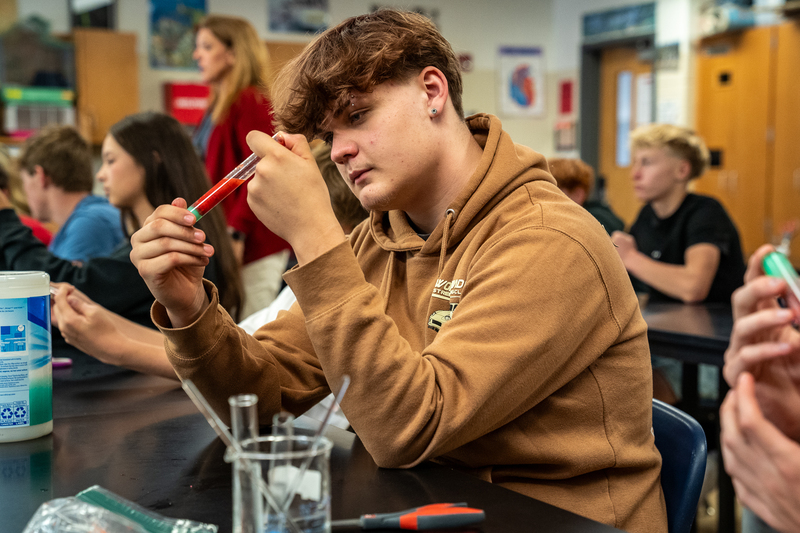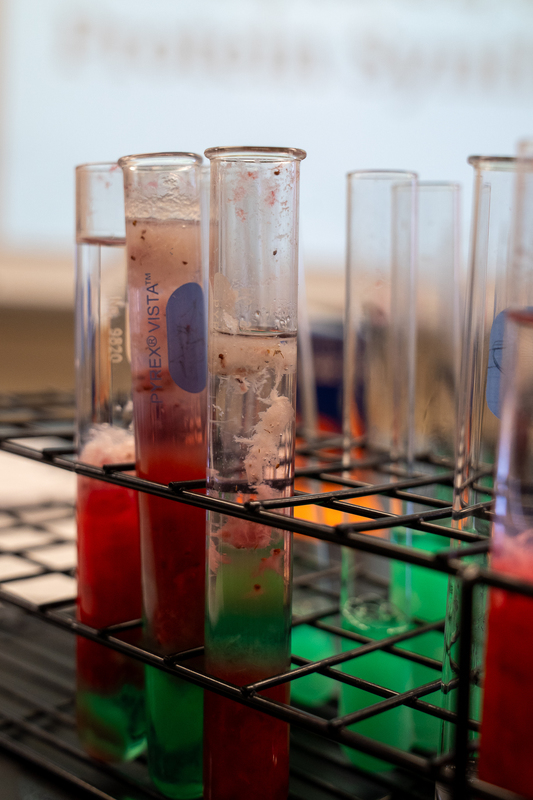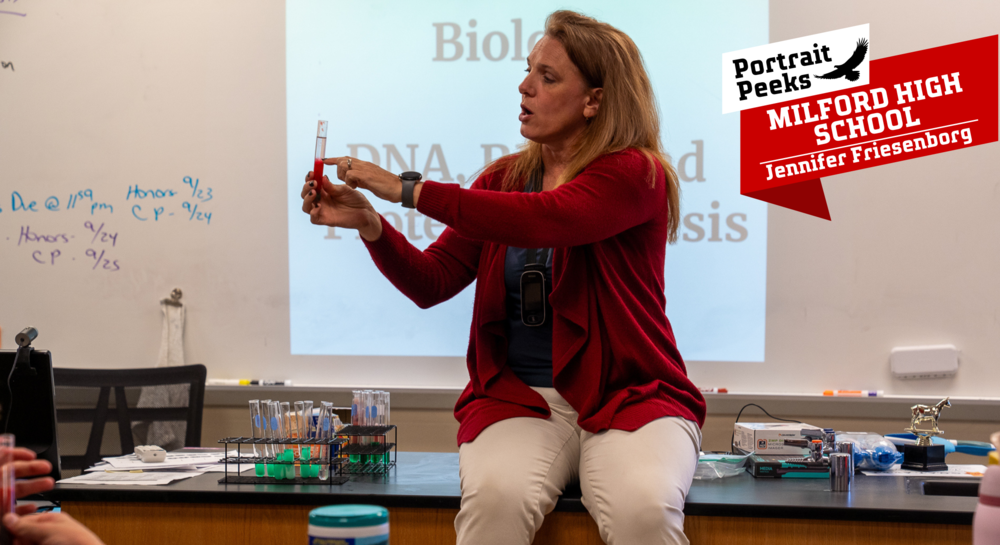Critical Thinkers | Information Evaluators
These strawberries were not for snacking. In Mrs. Friesenborg’s ninth-grade science class, they were the star of a hands-on investigation that let students pull DNA right out of a piece of fruit. With test tubes, detergent, and a few household tools, students extracted real strands of strawberry DNA and brought one of biology’s most complex concepts to life in their own hands.
 What started as a bag of smashed strawberries quickly turned into a full lab experiment. Students created their own extraction solution, filtered out pulp through baggies and carefully added detergent. Before long, the clear, stringy clumps of DNA appeared, ready to be pulled out.
What started as a bag of smashed strawberries quickly turned into a full lab experiment. Students created their own extraction solution, filtered out pulp through baggies and carefully added detergent. Before long, the clear, stringy clumps of DNA appeared, ready to be pulled out.
Each strawberry cell contains eight copies of the genome, a trait called being octoploid. That means strawberries have a lot more DNA per cell than organisms with only one copy, which makes them the perfect choice for a successful DNA extraction.
This hands-on activity also mirrors the work of scientists in the lab. To study DNA, scientists must first get it out of the cell through a process called DNA extraction. While the student version used household materials, biotechnology companies use specialized kits to do the same thing in research settings. For ninth graders, this experiment is an early step into practices they may one day use in college labs, medical research, or biotechnology careers.
As evaluators, they weren’t just following steps. They were analyzing evidence, questioning results, and applying classroom knowledge to a real-world procedure. The strawberry activity offered a vivid reminder that science is not only about memorizing facts, but about testing, observing, and reasoning through the invisible systems that make life possible.
In Mrs. Friesenborg’s class, ninth graders are learning to do what scientists do every day: ask bold questions, think deeply, and draw conclusions from the evidence right in front of them.

